 Bacteria and viruses are the major culprits of illness during the winter months, producing many common side effects like coughing, sneezing, fever, and vomiting. Bacteria are simple, single celled organisms that under the right conditions have the ability to reproduce and multiply at astonishing rates. Just one bacterium can divide itself into two separate parts in under 20 minutes, meaning within hours, millions of that bacterium is flourishing in your body. Viruses are consistently misunderstood, as they are not live organisms. A virus is a sliver of DNA in a protective coat, which attaches itself to cell walls and injects DNA or enzymes in the cell. The DNA uses the inherent cell technology to reproduce new virus particles so when the cell dies and splits open, the new virus particles are free and can infect other healthy cells. Bacterial and viral infections are both spread through contact with contaminated people, surfaces, food, water, animals or insects. Most bacteria are harmless to people, with less than 1% causing diseases. Viruses do cause disease and are often very specific about the cells they target. There are certain types of virus that attack cells in the liver, respiratory system, lymph and blood. The Immune System is an intricate, intelligent and hard working machine, dedicated to protecting your body from bacteria, microbes, viruses, toxins, and parasites. The immune system first uses your skin to create a barrier preventing bacteria and viruses from entering your body. Skin is usually impermeable as it secretes antibacterial substances. Tears, saliva and mucous contain enzymes that destroy bacterial cell walls. Mucous is able to trap germs and prevent them from invading your body further. Mast cells that are made to fight infections line the nasal passage, throat, lungs and skin. If a bacteria or virus is able to enter the body, the immune system will try to quickly detect, identify, and destroy it before it can invade cell walls and reproduce. Much of this work is done through the lymphatic system where cells and bloods are drained and filtered to remove bacteria. Antibodies, produced by the white blood cells, bind to virus particles or bacteria and prevent them from invading cell walls. The last way the immune system protects your body is by supporting detoxification of any virus or bacteria that have been able to reproduce. Leukocytes are white blood cells that move freely through the body capturing invaded and disease cells. Different types of leukocytes have specific immune boosting roles. Lymphocytes become T and B Cells found in the bloodstream, lymph tissue, and digestive system. B cells produce antibodies while T cells hunt down contaminated cells, bump up against them, killing them. Macrophages are critical to the immune system as they ingest foreign particles like bacteria and microbes. Immune Busters Junk Food & Sugar: Junk foods are full of chemicals, processed sugars, and polyunsaturated fats. When you are malnourished, your immune system does not have the tools or energy it needs to function. Toxins, chemicals, and invading organisms are able to store or hide themselves in polyunsaturated fats preventing them from detection and detoxification by the immune system. Sugar significantly inhibits the process of phagocytosis, the process by which immune cells engulf, kill and digest invading microbes. Just 75-100 mg of sugar (the amount in two cans of soda) starts to suppress immune health within just 30 minutes and can continue to for at least five hours after ingestion. Sedentary Lifestyle: People who are sedentary have a less efficient immune system and are far more likely to contract colds, flus and other illnesses. Walking just 30 minutes a day increases the amount of leukocytes in the body. The lymphatic system also relies on exercise to keep it moving, as it does not have a pump like the circulatory system. The lymphatic system is a major component of your immune system, as it transports lymph, a fluid containing infection-fighting white blood cells, throughout the body. ŸStress: Stress significantly impacts the health of your immune system and its ability to fight off disease by elevating levels of the hormone cortisol. Chronic stress lowers the amount and function of T cells and macrophages, ultimately leaving you move vulnerable to disease and illness. Virus and bacteria thrive in a body wracked by stress, and spread and mutate more quickly throughout the body. Lack of Sleep: Your body heals and repairs itself as you sleep. Keeping your body from sleep contributes to an increase in cortisol levels. Those who are sleep deprived have lower levels of killer cells. Your digestive system is also disrupted by a lack of sleep. Since your immune system lives in your gut, it is important to keep your digestive system healthy and replenished with good, healthy probiotics. ŸIsolation: People who are isolated or experience feelings of loneliness are more susceptible to viral and bacterial infections and illnesses. They also experience more reactivation of latent viruses in their systems and higher amounts of inflammation. Isolation has been shown to affect the immune system on a cellular level due to changes in DNA and gene expression. Incredible as our bodies are, laughter is truly the best remedy. Laughing provides a major boost to the immune system by increasing white blood cells, infection-fighting antibodies, and by lowering levels of cortisol. Inappropriate Antibiotic Use: Antibiotics do not fight viral infections like colds, flus, the majority of sore throats (only about 10% of sore throats end up being Strep Throat), bronchitis, and many sinus and ear infections. They do not cure infections. They do not keep you from getting sick. They will not help you or your children feel better. Only take antibiotics to fight bacterial infections. Take them right away and for the entire course as they were prescribed. Do not use them as a prevention tool. Do not save or share your antibiotics. Do not use soaps or lotions that are antibacterial. The antiviral drugs created to help prevent and stop the spread of flu (influenza A) are no longer effective. According to the CDC at least 2 million people become infected with antibiotic resistant bacteria each year and that number is growing. The World Health Organization states that antimicrobial resistance threatens the effective prevention and treatment of an ever-increasing range of infections caused by bacteria, parasites, viruses and fungi. WHO reports it is an increasingly serious threat to public health that requires action across all government sectors and society. This is why it more important than ever to protect you and your family from viral and bacterial infections by giving your body what is needs to naturally boost the immune system and stay well. Immune Boosters Vitamins & Minerals Vitamin A: This fat-soluble vitamin is critical for immune health as it reduces the rate of viral infections, enhances white blood cell function, helps fight against bacterial infections and carcinogens, and supports the immunes defenses of your skin and mucous membranes. B Vitamins: B6 helps to insure that white blood cells respond to bacterial and viral infections. B12 manages cell division and supports the growth of white blood cells. Folic acid supports the development and maintenance of the immune system. Vitamin C: Vitamin C is the master immune-boosting nutrient. Alone, it is anti-viral and anti-bacterial and is able to detox your body of toxins from bacteria. White blood cells rely heavily on vitamin C to fight infections and inflammation. Vitamin C helps immune cells mature. For strong immune support take 2-3 grams of Vitamin C per day. Vitamin D: Vitamin D activates the immune system and is essential for signaling T cells to take action. Increased levels of vitamin D will help protect your body from colds, flus, and upper respiratory tract infections. Vitamin D will also boost your mood during the winter months, helping you stay active, happy and healthy. Vitamin E: This vitamin is of particular importance to the elderly as most are deficient. Vitamin E reduces infections and helps the body heal more quickly. Vitamin E works even more efficiently when taken with selenium, a powerful antioxidant mineral. A deficiency in selenium permits viruses to mutate into more dangerous pathogens. Chromium: This mineral optimizes the ability of macrophages and white blood cells to respond to infections and invaders. It is also crucial to cytokine production. Chromium also helps to suppress your immune system when it becomes hypersensitive or over-responsive. Zinc: Zinc is essential for optimal T cell and natural killer cell function and is needed by the lymph system to properly rid the body of invading organisms. Zinc is directly involved in antibody production so you can fight infection. Taking more than 15-25 mg of zinc per day can inhibit the function of the immune system. Zinc lozenges reduce the duration and severity of the common cold. Herbs & Phytonutrients Mushrooms: One of the most studied foods for its health benefits, mushrooms are extremely beneficial to health, protecting your body from viruses, bacteria, pollution, chemicals, mold, and all toxins. They contain beta glucans, immunomodulator agents that activate and regulate the immune system making it more efficient. Mushrooms stimulate macrophages and lymphocytes, and are able to fight antibiotics resistant bacteria and viruses, and the aggressive viruses that cause upper respiratory infections. Mushrooms significantly alleviate symptoms of the common cold. Mushrooms have potent antiviral, anticancer, antitumor, and anti-inflammatory properties. Probiotics: About 60% of your immune system is located in your digestive system; so maintaining a healthy environment for your immune system to thrive is critical. The healthy bacteria or microbiota living in your gut are responsible for helping you absorb and utilize vitamins, minerals and other nutrients essential to immune health. They aid in the breakdown of toxins and keep bad bacteria at levels your body can fight off. Microbiota help create the mucous that lines your digestive tract that captures foreign invaders. They also aid in the production of antibodies. Grapefruit Seed Extract (GSE): Societies from South America, Europe and Asia have traditionally used Grapefruit Seed Extract for its immensely powerful antiviral and antibacterial components. It is rich in disease fighting antioxidants and phytonutrients like hesperidin, a well-studied natural immune system booster. A recent study from The Journal of Alternative and Complementary Medicine reported that GSE was effective at killing over 800 bacterial and viral strains, 100 strains of fungus, and a large number of single and multi-celled parasites. It is believed there is no other naturally occurring anti-microbial that compares. Research microbiologists from the University of Georgia found GSE was vastly effective as a non-toxic disinfectant and potent enough to use as pre-surgical soap. GSE promotes wound and scar tissue healing and topical skin infections. Elderberry: Used for centuries to treat respiratory illnesses, elderberry also reduces swelling of the mucous membranes and sinuses relieving congestion. Elderberry has been shown to reduce the severity and length of influenza. Elderberry acts as an antiviral by attaching itself to the tiny protein spikes on the surface of a virus, preventing it from being able to penetrate healthy cells. It has also been shown to be effective against antibiotic resistant viruses. Elderflower: Elderflower contains compelling antibacterial properties that have been shown to be the most effective way to combat pathogens like antibiotic resistant MRSA. It is also an antiviral, anticancer, antioxidant and anti-inflammatory. Elderflower is excellent for treating colds, flus, sinus infections and respiratory troubles. Dried Elderflower can be made into a tea, however the leaves, twigs and roots are toxic. Monolauric Acid: It was originally discovered in human breast milk as researchers were looking for the antiviral properties that protect infants from infections. Viruses avoid detection from the immune system by hiding in body fat. Monolauric acid is able to burn the fat surrounding the virus away so your immune system can find and destroy them. It also has been shown to enhance all immune responses to fungus and viruses Olive Leaf: The active ingredient in olive leaf, oleuropein, eliminates viruses, fungi, bacteria, and parasites that cause disease. It helps to alleviate symptoms of the common cold, sore throats, chronic sinusitis, bronchitis, and pneumonia. People with respiratory tract infections who take Olive Leaf extract can help prevent infection spreading expect a rapid recovery and prevent the infection from Garlic: A potent antiobiotic containing 100 sulfuric compounds that are powerful enough to wipe out bacteria, parasites and infection. Garlic is excellent for reducing the time and severity of the common cold. Heating garlic destroys the sulfuric compounds that make it a potent immune booster so juice it! Aged garlic also lacks allicin, the most significant antiviral and healing component of garlic. Astragalus: Long used in Traditional Chinese Medicine, this incredible antiviral strengthens and regulates the immune system to prevent upper respiratory infections and the common cold and flu. Astragalus encourages an increase in the production, activity and function of immune cells, often triggering them from a resting state. Astragalus supports the health of the lungs and lessens asthmatic symptoms and seasonal allergies. Astragalus is an adaptogen, helping to boost energy and protecting your body from the destructive side effects of stress. Oregano: This commanding herb has antiviral, antibacterial, antimicrobial, and antiparasitic properties. It effectively treats upper respiratory infections. Oregano easily fight salmonella, E. coli and other harmful organisms found in undercooked meat or contaminated water. It also kills organisms that cause skin disorders like eczema and psoriasis and can be used directly on the skin to speed healing. Echinacea: Taking Echinacea at the first signs of a cold or flu optimize its benefits to shorten the severity and duration of illness. It is commonly taken in Europe to prevent illness. Always take Echinacea containing both root and flowering parts as they work synergistically to support the immune system. Cats Claw: This rainforest plant gets its antiviral and immune boosting powers from its root. The roots contain medicinal compounds called pentacyclic oxindole alkaloids (POAs). POAs directly interact with white blood cells and support macrophages to work faster and engulf more bacteria and disease causing microbes. Cats Claw increases the production of interleukin, a chemical protein secreted by macrophages that stimulates dormant white blood cells into action. POAs also help increase the number of white blood cells that make antibodies, and the number of T cells including Killer T cells that destroy cancer cells. Osha Root: A powerful herb used traditionally by Native Americans and the Pueblo and Taos living in New Mexico to treat upper respiratory and sinus infections. Native Americans also have relied on Osha Root to increase endurance and energy. Osha Root has antifungal, antiviral and antibacterial properties and helps to significantly reduce inflammation in the bronchial tubes. Osha root encourages your body to sweat, helping reduce fevers and detoxing your body of the flus, coughs, colds and other viral infections before symptoms worsen. The tubular end of Osha root can be chewed on by themselves in small pieces or cut and added to honey to make a cough syrup. The upper parts of the root are used to make teas or tinctures. Simmer Osha root for at least 30 minutes when making a tea, but is optimal was simmered on a low heat for 5-6 hours. Yarrow: Scientific studies have shown yarrow to provide benefits to nearly every organ in the body. Yarrow is an excellent decongestant and expectorant. It helps your body to sweat out infections from flu, colds and fevers. Yerba Santa: This herb works incredibly well at opening the lungs and sinuses to dissolve and remove accumulated phlegm. Yerba Santa supports your body against coughs, colds, flus, pneumonia, and chest congestion. Breathing in the smoke or steam from Yerba Santa leaves is particularly beneficial to those with asthma. Baptisia: Baptisia is an antioxidant with powerful anti-inflammatory components that support the immune system by fighting infections in the mouth, gums and throat. Those with a weak immune system or are frequently ill experience major benefits from Baptisia, becoming better protected against colds, flus and respiratory illnesses. Goldenseal: This herb has built a reputation as an herbal antibiotic and immune system booster. It has been used by Native Americans to treat whooping cough, respiratory infections, fever, and pneumonia. Goldenseal also has anti-inflammatory and astringent properties that soothe irritated mucous membranes around the eyes, ears, nose and throat. The alkaloid Berberine is found in Goldenseal and is effective against bacteria, protozoa, fungi, and Streptococci. Clinical studies have shown it to treat diarrhea caused by E.coli, giardia and salmonella. Foods Black & Green Tea: Rich in L-Theanine, these teas increase the antivirus properties of blood. Oats & Barley: A good source of beta glucans. Chicken Soup: Cooking chicken releases the amino acid cysteine, which helps to fight infection and inflammation in your bronchial tubes. Fish: Rich in selenium and Omega 3 fatty acids that help protect your lungs from colds and respiratory infections. Organic Grass Fed Beef: Contains ideal amounts of zinc and Omega 3 fatty acids. Orange Fruits & Vegetables: Any orange fruit or vegetable (sweet potatoes, pumpkins, squash, carrots, cantaloupe) contains high levels of Vitamin A. Citrus Fruits and Red Bell Peppers: Rich in Vitamin C. Fermented Foods: Sauerkraut, kimchi, yogurt, kefir, and kombucha are a great way to get probiotics. Coconut Oil: Rich in lauric acid which converts to monolaurin in your body. The medium chain triglycerides in coconut oil actually disrupt the lipid membranes of offending organisms, making them easier to be attacked or ingested by killer cells and macrophages. Chlorella: A freshwater algae that is super efficient at detoxifying the body and increasing oxygen in your blood so you can heal and recover more quickly.
0 Comments
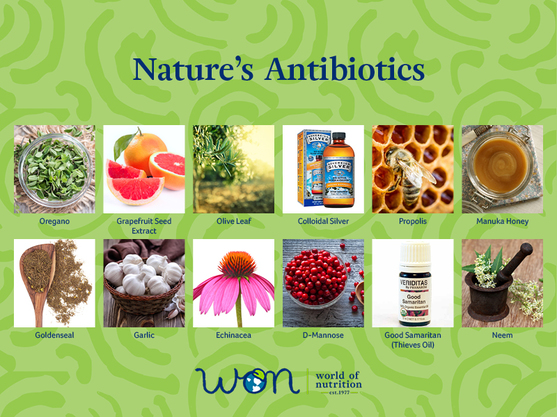 Nature's Antibiotics The good bacteria in your gut have a significant and profound impact on your health, and maintaining a healthy microbiome is critical to whole body wellness. As we enter the start of cold and flu season it is important to understand how prescription antibiotics can negatively impact your health. Prescription antibiotics wreak havoc on, and devastate the balance of good and bad bacteria in your gut. This can have a detrimental effect on your physical and mental health. Antibiotics do not fight viral infections like colds, flus, the majority of sore throats (only about 10% of sore throats end up being Strep Throat), bronchitis, and many sinus and ear infections. They do not cure infections. They do not keep you from getting sick. They will not help you or your children feel better. Only take antibiotics to fight bacterial infections. Take them right away and for the entire course as they were prescribed. Do not use them as a prevention tool. Do not save or share your antibiotics. Do not use soaps or lotions that are antibacterial. (Finally these products have been recognized for their contribution to antibiotic resistant bacteria and soon can no longer be purchased.) The antiviral drugs created to help prevent and stop the spread of flu (influenza A) are no longer effective. According to the CDC at least 2 million people become infected with antibiotic resistant bacteria each year and that number is growing. The World Health Organization states that antimicrobial resistance threatens the effective prevention and treatment of an ever-increasing range of infections caused by bacteria, parasites, viruses and fungi. Beyond causing antibiotic resistance, the overuse and misuse of antibiotics reduces the absorption of vitamins and damages the entire lining of the digestive tract, contributing to leaky gut. WHO reports it is an increasingly serious threat to public health that requires action across all government sectors and society. Just this year, a study from the University of Utah and the CDC found that when physicians prescribe antibiotics they choose broad spectrum ones 60% of the time. The same study showed children receive broad-spectrum antibiotics 50% of the time, regardless of the condition. And, an amazing 25% of the time, antibiotics are prescribed when they have no use. This is why it more important than ever to provide you and your family with powerful, natural antibiotics that will effectively boost immune health and not destroy it. Oregano This commanding herb has antiviral, antifungal, antibacterial, antimicrobial, and anti-parasitic properties. It contains powerful compounds called carvacrol and thymol that make it superior to prescription antibiotics that often cause horrific side effects. There are over 800 studies that reference carvacrol in PubMed. Oregano easily fight salmonella, E. coli and other harmful organisms found in undercooked meat or contaminated water. It treats candida, yeast and urinary tract infections. It supports the health of the upper respiratory system, making it effective not only for bronchitis and preventing the spread of virus or bacteria to the lungs, but also for sinus infections and allergies. It kills organisms that cause skin disorders like eczema and psoriasis and can be used directly on the skin to speed healing. Most amazingly, oregano has been shown to prevent side effects to some of the world’s most dangerous drugs and medications, like methotrexate. Grapefruit Seed Extract Societies from South America, Europe and Asia have traditionally used Grapefruit Seed Extract for its immensely powerful antiviral and antibacterial components. It is rich in disease fighting antioxidants and phytonutrients like hesperidin, a well-studied natural immune system booster. A recent study from The Journal of Alternative and Complementary Medicine reported that GSE was effective at killing over 800 bacterial and viral strains, 100 strains of fungus, and a large number of single and multi-celled parasites. It is believed there is no other naturally occurring anti-microbial that compares. GSE breaks down the bacterial membrane, releasing the cytoplasmic contents vital to the life of the bacteria cell. Research microbiologists from the University of Georgia found GSE was vastly effective as a non-toxic disinfectant and potent enough to use as pre-surgical soap. GSE promotes wound and scar tissue healing and topical skin infections and has antibacterial characteristics that have been proven to be as effective as topical antibacterial creams. Olive Leaf The active ingredient in olive leaf, oleuropein, eliminates viruses, fungi, bacteria, and parasites that cause disease. Oleuropein is a powerful anti-inflammatory. It helps to alleviate symptoms of the common cold, sore throats, chronic sinusitis, bronchitis, and pneumonia. People with respiratory tract infections who take Olive Leaf extract can prevent the infection from spreading and expect a rapid recovery. New research shows that olive leaf is neuroprotective, suppressing inflammation and lowering damage done on the brain and central nervous system from oxidative stress. Oleuropein inhibits the enzyme xanthine oxidase that creates uric acid and causes gout. Compounds in olive leaf inhibit growth factors in cancerous cells and disrupts their signaling pathways. Oleuropein further suppresses an enzyme that helps cancer cells derive and store energy. Silver Silver is a natural element that can be found in whole grains, mushrooms, spring water and seawater. Until the introduction of antibiotics, silver was used predominately by physicians to boost the immune system because of its strong antimicrobial effects. Silver has been recognized as a trace element, meaning it is essential for the maintenance of health and wellness. Silver is also a metal and so can become toxic at certain levels. Extremely low concentrations of silver exhibit potent health benefits, and using a colloidal silver hydrosol is safe at the recommended doses. In clinical research high populations of staphyloccus aureus, salmonella, candida, and enterococcus became undetectable within four minutes after exposure to 15-PPM concentrations of silver. Other studies have shown silver to have broad spectrum antimicrobial activity against streptococcuses, pneumonia, E. coli, and shigella that is as effective as an antibiotic but without undesirable side effects and damage to the intestinal flora. The most recent research shows colloidal silver can eradicate antibiotic resistant microbes like MRSA, the bird flu, and SARS. Propolis & Manuka Honey Bees gather propolis from leaf buds on trees and certain vegetables and combine it with wax stored in their abdomen to create a sticky substance with antimicrobial benefits used disinfect and protect the beehive. It is an incredible immune system stimulant with powerful healing, analgesic, antioxidant and anti-inflammatory properties. Propolis has potent antibiotic properties against aggressive bacteria and harmful pathogens. Propolis speeds up recovery time and wound healing while improving feelings of vitality. Propolis contains a compound called pinocembrin, an antifungal flavonoid that also encourages healthy cell growth. It has been clinically shown to be more effective than steroid creams in reducing mast cells that cause inflammation and inhibit wound healing. It treats cold sores quickly and prevents against future outbreaks. A compound in Propolis reduces inflammation in the inner ear, treating middle ear infections that can lead to temporary hearing loss. It prevents the overgrowth of candida, yeast, and fungus and encourages the production of “good” gut bacteria. Propolis is currently being studied for its believed ability to hamper cancer cell growth. Made from bees that pollinate the Manuka bush in New Zealand and Australia, Manuka honey is prized for its unique healing benefits. It has up to four times the nutritional content of regular honeys from bees that pollinate flowers. Additionally, Manuka honey has high levels of enzymes that give it potent antibacterial properties and create a natural occurring hydrogen peroxide that can be measured for medicinal quality. This is called the Unique Manuka Factor (UMF). To get the medicinal benefits from Manuka honey you must purchase a product with a UMF 10+. Manuka honey has powerful antiviral, antifungal and anti-inflammatory properties that are effective against a wide range or resistant bacteria. It balances bacteria throughout the digestive system and treats SIBO. It has been clinically shown to treat and eliminate staph infections like MRSA. It also stimulates the immune system to stop the growth of Strep bacteria. Goldenseal This herb has built a reputation as an herbal antibiotic and immune system booster. It has been used by Native Americans to treat whooping cough, respiratory infections, fever, and pneumonia. Goldenseal also has anti-inflammatory and astringent properties that soothe irritated mucous membranes around the eyes, ears, nose and throat. The alkaloid Berberine is found in Goldenseal and is effective against bacteria, protozoa, fungi, and Streptococci. Clinical studies have shown it to treat diarrhea caused by E.coli, giardia and salmonella. The anti-inflammatory properties of goldenseal reduce swelling and irritation in the mucous membranes helping to prevent allergy symptoms. As a natural antibiotic it prevents secondary infections caused by an allergic reaction that often occur in the lungs. This herb is used for acute conditions, and not continuously for prevention. Because of its powerful antimicrobial properties, it can be very drying on mucous membranes throughout the body and difficult on the liver. Garlic A potent antibiotic, garlic contains 100 sulfuric compounds that are powerful enough to wipe out bacteria, parasites and infection. Hippocrates encouraged the use of garlic for treating respiratory issues, parasites, poor digestion, and fatigue. Garlic is excellent for reducing the time and severity of the common cold. Aged garlic also lacks allicin, the most significant antiviral and healing component of garlic. Garlic is one of the most potent antibacterial herbs and protects the body from allergies and chronic sinus infections. Garlic helps to break up mucous, easing congestion. Heating garlic destroys the sulfuric compounds that make it a potent immune booster. Eat or juice raw garlic for maximum and immediate benefits. Echinacea Echinacea is an incredible immune modulating herb. It can either boost the immune system when needed, or calm wide spread inflammation. Taking Echinacea at the first signs of a cold or flu optimize its benefits to shorten the severity and duration of illness. It is commonly taken in Europe to prevent illness. Always take Echinacea containing both root and flowering parts as they work synergistically to support the immune system. Echinacea stimulates the lymphatic system, promoting drainage and elimination of toxins, and helps to prevent and fight potential infections by stimulating phagocytosis (the consumption of invading organisms by white blood cells). Echinacea can be used long term. D-Mannose D-Mannose is a naturally occurring sugar found in berries, peaches, apples, and other plants. It does NOT affect metabolism or blood sugar levels like fructose because it is slowly absorbed and is not converted to glycogen or stored in the liver. D-mannose is filtered through the kidneys and sent to the bladder where it helps promote the growth of healthy flora and prevent bacteria from staying in the urinary tract. Bacteria have tiny projections called fimbria that are made from an amino acid-sugar complex called lectin. Because bacteria cells are coated with fimbria they are literally able to stick to the inner walls of the urinary tract system. Once bacteria have adhered themselves to the lining of the urinary tract they can no longer just be washed out with water. D-Mannose is able to cover the lining of the urinary organs, and is enticing to bacteria, which quickly adhere themselves like Velcro to the D-mannose molecules. Lectin binds and sticks better to D-mannose than to human cells, meaning your body can detox and rid itself of bacteria once they have been coated with D-mannose. D-mannose has been shown to be more effective than cranberry alone at reducing the symptoms and length of UTI’s. Good Samaritan (Thieves Oil) The story behind Thieves oil is widely varied and can be traced from the 15th to the 18th century. This was a time during which the bubonic plague rampaged Europe. Physicians walked around wearing dark robes, wide-brimmed hats, and masks with long beaks. Scientific evidence now supports their bizarre behavior, as the beak stored dried herbs and essential oils the physicians used to protect themselves from the extremely contagious infection. They would also douse their robes and hats with the same essential oils. During this time the legend of a witch’s brew called “Marseilles Vinegar” developed. This tonic was made from rosemary, sage, lavender, rue, camphor, garlic, cloves and strong wine vinegar. This herbal medicinal vinegar was said to be used by four thieves who used it to rob the sick and dead and avoid becoming infected with the plague. French aromatherapy doctor Jean Valnet wrote a book in which he quotes archives of the Parliament of Toulouse in which the captured thieves revealed their recipe. "During the Great Plague, four robbers were convicted of going to the houses of plague victims, strangling them in their beds and then looting their dwellings. For this, they were condemned to be burned at the stake, and in order to have their sentence mitigated, they revealed their secret preservative, after which they were hanged." Valnet created other vinegar recipes using essential oils from the original. Richard Forthave also shows up in historical references concerning four thieves as the man who created and sold the preparation. His tonic relied heavily on garlic and the four common herbs found in each recipe-clove, cinnamon, rosemary and lemon. Dr. John R. Christopher, a pioneer in US herbal medicine, brought the story of the four thieves and Richard Forthave to the end of last century with a garlic heavy formula he used to first begin educating people on the powerful antibiotic properties of herbs. Good Samaritan pays homage to this history and efficacy of the four thieves blend. It combines 100% Ecocert Organic essential oils cinnamon bark, clove, lemon, eucalyptus radiata, rosemary cineol and cinnamon leaf. These oils have been researched extensively for their antibacterial activity. The official journal of the International Society for Complementary Medicine Research showed cinnamon, clove, geranium lemon, lime, orange and rosemary to have a significant inhibitory effect against bacteria strains. Cinnamon was shown to have the most comprehensive antibacterial agent. Scientists have shown that these essential oils and others including lavender, tea tree, eucalyptus, and lemongrass can fight numerous pathogens and antibiotic resistant bacteria by weakening the cell wall of bacteria and introducing apoptosis. You can diffuse Good Samaritan in your home or work area, or sweep over your hair and clothes to help boost immunity and fight off infection. Neem 75% of Ayurvedic remedies contain neem, and Indians refer to the neem tree as “the village pharmacy”. It is the most heavily researched herbal remedy in India and scientist have identified over 150 active substances in neem. Neem is often described as a panacea for whole body health and can be used internally and topically. Neem leaves and the oil from the seed have antibacterial, antifungal, antiseptic, antiparasitic and antimicrobial effects that bacteria and other microbes are unable to become resistant to. Neem is blood cleanser and helps to protect and restore the liver. Neem is excellent for treating all skin issues and promote wound healing. It is a potent immunostimulant that supports healthy cell proliferation and apoptosis. It has antioxidant properties that protect the lungs. Neem helps to regulate blood sugar and balance metabolism. The key to better health is always to be creating a lifestyle based on moderation. It is critical to eat a balanced and nutrient rich diet, exercise and manage your daily stress.
Diabetes occurs in the body when cells that typically respond to insulin become insulin resistant. Insulin is a hormone that communicates with cells, telling them to allow glucose (blood sugar) to enter. If glucose cannot enter the cells, it builds up in the blood stream and begins to damage tissues and organs throughout the entire body. This type of damage leads to cardiovascular disease, kidney disease, vision damage and nerve damage or neuropathy. Insulin can either be used by the body for energy, or it can become stored as fat for later use. What is amazing about the chemistry in your body is that it reflects and mimics your daily habits. This is the key to understanding that living a sedentary life creates a sedentary environment in which your body is trying to function. If you are unable to manage stress, neither can your body. It begins to produce excess levels of cortisol to help your body manage the effects of stress. Cortisol causes your body to store extra amounts of fat for energy during these times of distress. This is the fat that is found in the belly, the most dangerous kind of fat you can carry. This type of belly fat is directly related to heart disease. You can reverse your Type 2 diabetes diagnosis!! In as little as one week, you can make the lifestyle changes necessary to promote the pancreas to start working efficiently, to begin to normalize your blood sugars, and to increase your body’s cells to become more insulin sensitive. Weight Loss: Losing just 5 to 10 percent of body weight can drastically lower blood sugar levels and reduces insulin resistance. This also has the added benefit of decreasing your risk for cardiovascular disease. Eat Healthy: Eat whole foods rich in nutrients and fiber. Stay away from refined carbohydrates and those foods that affect your glycemic index, like white flour in breads and pastas, sugars, potatoes, and processed foods. Avoid saturated and Trans fats. Eat a heavily plant based diet of vegetables, beans, nuts, whole grains, berries, and lean proteins. Exercise: This is one of the very best things you can do for diabetes. Exercise encourages your muscles and liver to take in glucose, lowering the blood sugar levels in your body. Exercise will decrease insulin resistance, regulate your blood pressure, reduce stress and help you sleep! Find something you love to do! Go for a brisk walk, ride your bike, put on a fun DVD workout dance video. Get excited about building muscle and becoming fit! You have the power to change your body! Get moving today! Manage Stress: Stress hormones increase blood sugar levels. This is the time to meditate, breathe, try yoga, and get out in the garden, read a book, or exercise. Take time in your day to unwind and do something just for you. Feed your soul! Supplements: Cinnamon is fantastic at regulating blood sugar. Those who take 1-6 grams of cinnamon a day reduce their blood sugars by 24%. Alpha Lipoic Acid (ALA) is the antioxidant in your body responsible for converting glucose into energy. It also protects your nerve cells from damage. Vitamin C in a mineral form is a powerful antioxidant carried in insulin that helps to maintain blood sugar. GTF Chromium is essential for carbohydrate and fat metabolism. People with low levels of GTF Chromium have increase insulin sensitivity. Vitamins B6 and B12 protect the cells against nerve damage and neuropathy. For additional and more in-depth information on Type 2 diabetes please join us for our class on Saturday, April 9th @ 10AM.  Bone Construction & Growth Mostly made of Type II Collagen the bones in your body are living, constantly changing matter and cells. Bones require calcium for strength and maintain stores of calcium for use by other parts of the body. There are two different types of bone tissue that comprise the 206 bones found in the adult body. The first is the outer layer called cortical, or compact, bone that accounts for 80% of bone mass. It is dense, durable, and rigid, protecting the inner layer of bone from damage caused by external forces. Muscles and tendons are attached to a fibrous membrane called periosteum that covers cortical bone. Capillaries run through the periosteum to supply cortical bone with blood and nutrients. The inner layer of bones is called cancellous, or spongy, bone and is less far less dense. Cancellous bone has a latticework of small chambers that contain connective tissue and bone marrow, where new red blood cells are produced. Cancellous bone provides structure and flexibility to the body with the ability to absorb shock inside the bone. Ossification is the process by which cartilage is transformed into new bone, beginning the third month of fetus life and is fully completed by late adolescence. Calcium and phosphate cells accumulate on cartilage cells, and once minerals surround these cells, they begin to die off and leave small pockets of separation. Small blood cells start to fill these spaces delivering osteoblasts, specialized cells collecting calcium and producing a substance filled with collagen fibers, called osteoid, to help build cortical bone. Osteoid is made stronger by minerals. Osteoblasts build bone by piling it up around themselves and become trapped inside turning into osteocytes. They are star shaped cells with long reaching arms that connect them to neighboring osteocytes from which they communicate and exchange nutrients. Some osteoblasts becoming lining cells that help control the movement of molecules in and out of bone. Your bones are constantly under reconstruction. Bones need repair from breaks, fractures, and damaged blood vessels, nerves and veins. The cells responsible for breaking down and reabsorbing existing bones are called osteoclasts. They often contain more than one nucleus and work with other osteoclasts as a team to reshape and rebuild bone. Bones that are used less often are often broken down to support other calcium and bone needs in the body. Your bones are like muscles in that they grow, thicken, and build endurance when challenged and used consistently.  Bone Loss The U.S. Centers for Disease Control and Prevention reports that one in six Americans has osteoporosis or early signs of the disease (osteopenia), and that one in four senior women in the United States have osteoporosis. It is predicted that one quarter of men over the age of 50 will suffer an osteoporosis-related fracture. The bones most affected by osteoporosis are the hip, spine, and wrists. When you are young you have more osteoblast cells than osteoclasts cells resulting in bone gain. As you age osteoblasts are unable to maintain the pace of osteoclasts that are still able to efficiently break down bone, leading to loss of bone mass. Other factors that contribute to bone loss include a sedentary lifestyle, smoking, malnutrition, drinking alcohol in excess, and low estrogen. 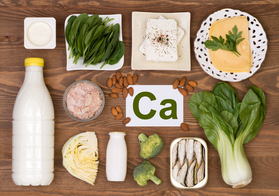 Calcium There are many types of calcium, hence the confusion in picking the right supplement to effectively strengthen and build your bones. You body absorbs calcium better when taken in small doses. Calcium also helps blood vessels regulate blood flow, assists in muscle contractions, supports nerve cell communication, and contributes to blood clotting. You body also absorbs calcium better when taken in small doses. –Calcium Carbonate is the most common and cheapest form of calcium supplement available. It is found in rocks, limestone, shells of marine animals, coral, pearls, eggshells and snails. It is highly concentrated in elemental calcium but is not highly bioavailable. Meaning, it is hard for your body to digest this type of calcium and utilize it for bone strength or any other health purpose and has very poor solubility in water. It also requires more stomach acid to be absorbed, and as you age your body produces less and less stomach acid. This further decreases its bioavailability and assumed potency. This is also the type of calcium that has been clinically shown to increase your risk for heart attacks and strokes because it leaves deposits in the arteries, increasing arterial plaque. It is about 40% calcium with an approximated bioavailability of 40%. –Calcium Citrate has an acidic base meaning it is more easily digested because is requires less stomach acid, but it is low in elemental calcium thus creating low bioavailability. It is about 20% calcium with an approximated bioavailability of 40%. –Oyster Shell Calcium, dolomite and bone mean are marketed as natural forms of highly absorbable calcium because they are mostly made from calcium carbonate. However they have all shown to have high toxic levels of lead. –Calcium Gluconate has very low levels of elemental calcium, about 9-155. Large amounts would need to be taken to have an impact on bone health, and its bioavailability is unknown due to contradicting studies. –Calcium Lactate is found in food sources like aged cheese and baking powder. It is added to many fresh fruits to help maintain their firmness and extend shelf life. This form of calcium is what you find in antacids and has a medium bioavailability in the body. This is why you hear many doctors suggesting people take Tums for calcium supplementation! However it only contains 9-13% elemental calcium and is not a good choice for people who are lactose intolerant. –Calcium Phosphate is from cow’s milk, nuts and seeds, beans, broccoli, dark leafy greens, black-eyed peas, figs, oranges, tofu, and salmon or sardine. Tooth enamel and bones are made mostly of calcium phosphate. It contains 39% elemental calcium. However supplement forms of this type of calcium, found as tricalcium phosphate are not bioavailable. The best way to get this form of calcium is from whole food, organic sources. –Calcium Citrate Malate is a water-soluble form of calcium that is created when calcium salts found in citric acids are mixed with malic acid. It is has more bioavailability than any of the previously listed calcium’s, as high as 42%, however it only contains roughly 26% elemental calcium. –Calcium Hydroxyapatite and Microcrystalline Hydroxyapatite Complex (MCHC): Calcium hydroxyapatite is found naturally in human and animal bones. MCHC is elemental calcium from bone that is combined with other minerals, proteins, and nutrients that functions a bone growth factors. The calcium content of MCHC varies with each brand but typically is around 22%. Recent studies show use of MCHC over several years can inhibit bone loss and increase bone density.  Plant Based Calcium Foods and plants supplying calcium also contain other nutrients and trace minerals that support bone growth and increase bone density. Plant based calcium does not contribute to arterial plaque. You do not need large doses or milligrams of food and plant based calcium, which also makes it more safe and efficient. –Algae based calcium supplements are the superior choice for building and strengthening bones. Highly concentrated in calcium, magnesium and minerals from the sea water, these nutrients are recognized by your body as food, making them highly bioavailable & being used in your body in as little as thirty minutes. Numerous studies have shown algae based calcium to be significantly more effective than all other forms of calcium in every tested parameter.
 Vitamins & Minerals –Vitamin K2 (menaquinone) helps to active proteins responsible for keeping calcium directed to the site of bone regeneration and out of arteries. Vitamin K also supports the ability of your bones to absorb impact ensuring bones are less likely to break from falls and accidents. Studies show that taking high doses of K2 can reduce the risk of spine and bone fractures. Vitamin K2 is found in natto (fermented soy), organ meats, egg yolks and dairy products. Do not confuse this with vitamin K1 that goes directly to your liver to help you maintain healthy blood clotting factors. Vitamin K2 does not get processed through the liver and is safe to take for those on blood thinning medications. –Vitamin D is critical to calcium absorption and supports the function of osteoblasts and osteoclasts. People with lower levels of vitamin D are more susceptible to osteoporosis and broken bones. Studies have shown that supplementing with higher doses of vitamin D may increase bone density before the onset of osteoporosis or osteopenia. –Vitamin C is necessary for collagen synthesis done by osteoblasts and is required for normal bone development. New research shows that vitamin C may significantly contribute to the prevention of bone loss. –Magnesium is an important mineral in the bone matrix, and supports calcium absorption. Magnesium may also be helpful in reducing bone loss. Magnesium is often found abundantly in foods that also provide calcium such a spinach, tofu, almonds, broccoli and lentils. –Strontium is a mineral that is found in the human body in bones and connective tissue. Studies have shown using 680 mg of strontium daily can reduce the risk of facture by over 40% in those with osteoporosis. Strontium is also credited with showing large gains in bones density and may improve cartilage metabolism. While it absolutely contributes to increasing bone density, many increases in bone density are overestimated with strontium supplementation. Strontium has a larger atomic weight than calcium, and when calcium is replaced by strontium in bone, the density of the bone appears larger. Calcium and strontium both utilize the same carrier protein required for transportation and absorption for use in bones. You should always take strontium four hours away from calcium and at night. Calcium supplements from algae naturally contain 3-5mg of strontium and that amount will not interfere with elemental calcium absorption. The American Heart Association reports that approximately 2,150 Americans die each day from heart disease, stroke and cardiovascular disease. That is one person every 40 seconds. Cardiovascular diseases claim more lives than all forms of cancer combined. Heart disease is the No. 1 cause of death in the United States. There are powerful vitamins, herbs, omegas, and antioxidants that can significantly reduce your risk of developing heart disease, cardiovascular disease and stroke. It is time to take back control of your health and wellness. 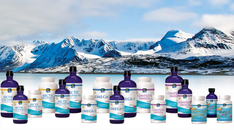 Omega 3 Fatty Acids: There is more scientific based evidence on the cardiovascular benefits of omega-3 fatty acids than any other nutritional supplement. Omega-3 fatty acids can lower bad cholesterol (LDL) and raise good cholesterol (HDL). They can lower blood pressure in people with hypertension. Omega-3 fatty acids are one of the best ways to prevent heart disease and reduce the chance of a second heart disease incident (heart attack, stroke, abnormal rhythms, or death). Eating just two servings of fish per week (think salmon or tuna) can reduce the risk of a stroke by as much as 50%. Omega-3 fatty acids encourage healthy blood vessel function and reduce inflammation around the heart. 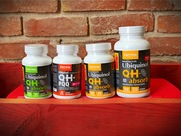 Coenzyme Q10: CoQ10 is an antioxidant that is found in nearly every cell in the body. Antioxidants fight free radical damage in the cells and DNA of the body. Free radicals contribute heavily to the aging process and many health problems like heart disease. CoQ10 has the ability to improve the amount of energy in cells and prevent blood clots from forming. Clinical studies have shown that people who took CoQ10 within three day of having a heart attack were less likely to have following heart attacks and further chest pains. It reduces the risk of death associated with heart disease. For those with congestive heart failure, CoQ10 reduces swelling in the legs, fluid in the lungs, and makes it easier for you to breathe, which results in higher levels of energy. There have been clinical studies that have shown CoQ10 may lower blood pressure over an extended period of time. Pharmaceuticals to treat high cholesterol deplete the body of CoQ10 and so it is extremely important to supplement this antioxidant. If you are on statins for high cholesterol, CoQ10 can help ease the side effects of this medication such as muscle pain and fatigue. Research has also shown that taking CoQ10 prior to heart surgery can help strengthen your heart as it recovers and lower your risk for irregular heart beats. (University of Maryland Medical Center, 2011) Ubiquinol is the active antioxidant form of CoQ10 and is needed by oxidized CoQ10 to achieve all of its important functions. Ubiquinol absorbed at least 2 times greater than CoQ10. As you age it becomes more difficult for your body to covert oxidized CoQ10 to Ubiquinol, making this form the best choice for a healthy heart. http://www.umm.edu/altmed/articles/coenzyme-q10-000295.htm 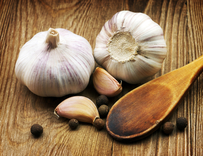 Garlic: Garlic is full of antioxidants. Garlic has been clinically shown to reduce plaque, lower blood pressure, lower LDL cholesterol, and lower levels of homocysteine. Homocysteine is an amino acid that is converted into cysteine with the help of vitamins B6, B12 and folate. Homocysteine that is not converted elevates homocysteine levels throughout the body and has been associated with heart attacks, stroke, and the formation of blood clots. Garlic can also act as an anticoagulant, or blood thinner, which helps prevent blood clots that lead to heart attacks and strokes. The most recent studies show aged garlic supplements can be taken with prescription blood thinners safely. Breakthrough research done at UCLA by Dr. Matthew Budoff demonstrated the powerful benefits of aged garlic. Patients received 1200 mg of aged garlic extract daily for one year, which reduced the growth of plaque by 66%, making garlic more effective than statin drugs and aspirin. http://jn.nutrition.org/content/136/3/741S.full 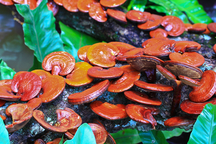 Reishi Mushroom: Reishi mushrooms have unique and complex elements such as triterpenes, alkaloids, sterols, and polysaccharides that support heart health. Reishi mushrooms have been studied intensively for their proven ability to improve blood flow to the heart and lower blood pressure. Reishi helps the heart muscle use less oxygen, making more available for the rest of the body to support health. Extracts from reishi reduce LDL cholesterol helping to prevent strokes and heart attacks. “Prescription for Natural Healing” by Phyllis Balch  Policosanol: Policosanol are derived from the waxes of plants such as sugar cane and yams. They are long chain alcohols that are soluble in water and are most commonly known as fatty alcohols. The key alcohol in Policosanol is called Octacosonal. It prevents the liver from creating an excess of cholesterol, resulting in lowering bad cholesterol and raising good cholesterol. It may also reduce the amount of plaque that is stored in the arteries. Policosanol and Octacosonal work together and it is not recommended to take Octacosonal by itself. Policosanol can be as effective as taking 100 milligrams of aspirin a day. It has also been shown to increase exercise performance in those with coronary heart disease. (TheSupplementGuide.org, 2012) http://www.thesupplementguide.org/g/Cholesterol_Heart_Health/policosanol-7.html 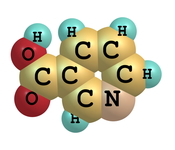 Niacin: Niacin is Vitamin B3. Studies have shown that Niacin can significantly improve HDL cholesterol levels by 15% to 30% with better success than statin drugs. It also can improve LDL levels by reducing triglycerides 20% to 50%. Hot flushes can occur with Niacin so start with small doses and increase over time. (www.webmd.com, 2012) 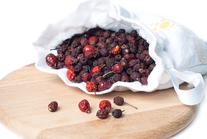 Hawthorn: Hawthorn is a shrub in the rose family which berries, leaves and flowers contain antioxidant flavonoids, including OPC’s. These antioxidants help dilate blood vessels, improve blood flow, and protect blood vessels from damage. Human clinical studies propose that hawthorn protects against heart disease by increasing coronary artery blood flow, improving circulations and lowering blood pressure. A large study done using over 900 patients with heart failure found taking a standardized hawthorn supplement significantly decreased the clinical symptoms of heart failure including palpitations, problems breathing and fatigue. Hawthorn was shown to be as effective as the prescription medication captopril for improving symptoms of heart failure. Hawthorn is effective for increasing blood flow to the heart, reducing angina (chest pain) and increasing the amount of time patients could work out without chest pain. https://umm.edu/health/medical/altmed/herb/hawthorn 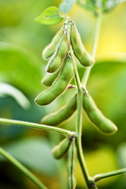 Nattokinase: Nattokinase is extracted from fermented soy and is a strong proteolytic enzyme that helps break down proteins causing inflammation. Nattokinase supports heart health by significantly reducing blood clots, normalizing blood pressure, and breaking down fibrin, the adhesive substance that makes plaque around the heart sticky. http://www.globalhealingcenter.com/natural-health/nattokinase/  Sytrinol: Sytrinol contains compounds called flavones found in oranges, tangerines, and palm fruit extracts that support total cholesterol, LDL cholesterol and triglyceride levels naturally. These flavones block enzymes in the liver that manufacture cholesterol and triglycerides. Clinical studies who sytrinol to be as effective as statin drugs, but without the side effects. Results show a 30% decrease in total cholesterol levels and up to a 27% decrease in LDL cholesterol within four to twelve weeks. http://doctormurray.com/health-conditions/high-cholesterol/ 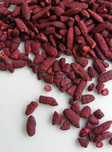 Red Yeast Rice Extract: Red Yeast Rice (RYR) is an extract from a centuries old Chinese Spice and is used in Traditional Chinese Medicine to support blood circulation. Numerous studies have shown RYR lowers your Total Cholesterol, LDL Cholesterol and Triglycerides while also having the ability to raise your good HDL Cholesterol. One of the major contributors to heart disease is widespread inflammation in the body. RYR has demonstrated the capacity to reduce inflammation that affects the heart. A large clinical study followed patients over a four year period and those taking RYR were at a lower risk for heart attack and death. The majority of cholesterol medications affect your liver, and have debilitating side effects like muscle ache, fatigue, changes in mental function and damage to muscle tissues. These side effects are the result of these drugs severely lowering levels of CoQ10 in the body. These prescription drugs are actually derived from Red Yeast Rice. However, RYR is more tolerated in the body. It is still recommended to supplement with CoQ10 when taking RYR. (PureHealthMD, 2012) http://health.howstuffworks.com/wellness/food-nutrition/vitamin-supplements/red-yeast-rice-extract.htm It is important to understand the role fats play in supporting heart health. Cholesterol is very misunderstood and in fact does NOT cause heart disease. Please take time to read the following information to learn more fats, how they work in your body, and what changes you can make in your diet to support your heart. Understanding Fats & Heart Health 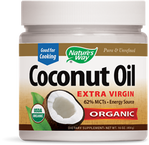 95% of the fats we eat from plant and animal sources come in triglyceride form. Triglycerides are three single fatty acid molecules linked together by a glycerol molecule. There are several different types of fatty acids that fall under three categories: saturated, monounsaturated, and polyunsaturated. A fatty acid molecule is chained together with carbon atoms, which can hold up to two hydrogen atoms creating a Saturated fat. A fatty acid chain that is missing a pair of hydrogen atoms is called Monounsaturated fat. Polyunsaturated fats are missing more than two pairs of hydrogen atoms. A missing pair of hydrogen atoms creates a weak link in the carbon chain which impacts health. The other key component to how a fatty acid affects health is the length of the carbon chain: long chain triglyceride (LCT), medium chain triglyceride (MCT), and short train triglycerides (SCT). Each fatty acid, saturated or not, is going to have a different effect on the health of your body, for better or for worse. All naturally occurring fats contain a mixture of all three groups of fatty acids. Animal fats are usually the highest in saturated fats while plant oils contain low amounts. Coconut oil contains the highest amount of saturated fat reaching 92%. Coconut oil is also composed of 64% MCTs, the highest dietary source, and it contains small chain triglycerides. When fat is not used immediately for energy it gets stored in our body as fat tissue. The typical LCTs found in meat and vegetable oil are the biggest culprit. MCTs are quickly broken down and are utilized by the body as the primary energy source. The fats from coconut oil rarely become stored as fat, or build up deposits in the arteries. Thus they do not have a harmful effect on cholesterol and they in fact protect the heart from disease and inflammation. Plant oils, with the exception of olive oil, are high in polyunsaturated fats. These fats become rancid and toxic when oxidized by exposure to heat, light or air resulting in the formation of free radicals. The oxidation process begins immediately when the oil is extracted from seeds, and the higher level of processing the more toxic an oil will become. The best types of oils for consumption are cold-pressed or expeller-pressed, which retain their natural antioxidants. Trans fatty acids were created with technology and are found in vegetable oils that have been hydrogenated to form a solid product like margarine and shortening. Trans fatty acids have been shown to have a direct impact on the development of heart disease, negatively affect heart health more than any other type of fat. Trans fatty acids also affect the ability of insulin to bind with red blood cells, linking it to complications with diabetes. Saturated fats are not vulnerable to oxidation because their chains are strong and complete with hydrogen atoms. Saturated fats even remain stable when exposed to normal cooking temperatures, making coconut oil the absolute best choice for cooking and baking. The liver easily converts saturated fats into cholesterol. This can raise blood cholesterol levels and is a reason many Americans avoid using coconut oil. Fat researchers and medical professionals know for a fact that neither saturated fat nor cholesterol causes heart disease. Not all people with high blood cholesterol level develop heart disease, and not all of those with heart disease have high blood cholesterol levels. High blood cholesterol levels are one risk factor of many (high blood pressure, age, diabetes, obesity, stress, tobacco use) for heart disease. Other carbohydrates from fruits, vegetables and grains also get converted by the liver into cholesterol, so it has been misleading to believe only saturated fats raise blood cholesterol levels and contribute to heart disease. Cholesterol doesn’t always play a role in atherosclerosis or formation of plague in the arteries. Cholesterol is actually needed by your body to repair damage to arterial walls. Atherosclerosis begins from injuries caused by toxins, free radicals, virus or bacteria. If these wounds aren’t healed properly, further damage, irritation, inflammation and scar tissue build up and attract platelets that stick to the site of injury as a protectant. Calcium, triglycerides and more cholesterol are drawn to these sites for additional healing. It is this mass of tissue that creates plaque, and the calcium causes the material to harden. Years of research and study demonstrate that people consuming coconut oil full of healthy MCT saturated fats actually have a reduced risk of heart disease, lower body fat composition, reduced risk of blood clots, lower levels of free radicals and higher levels of antioxidants, lower liver cholesterol levels, higher survival rate and fewer rates of heart disease. |
|


